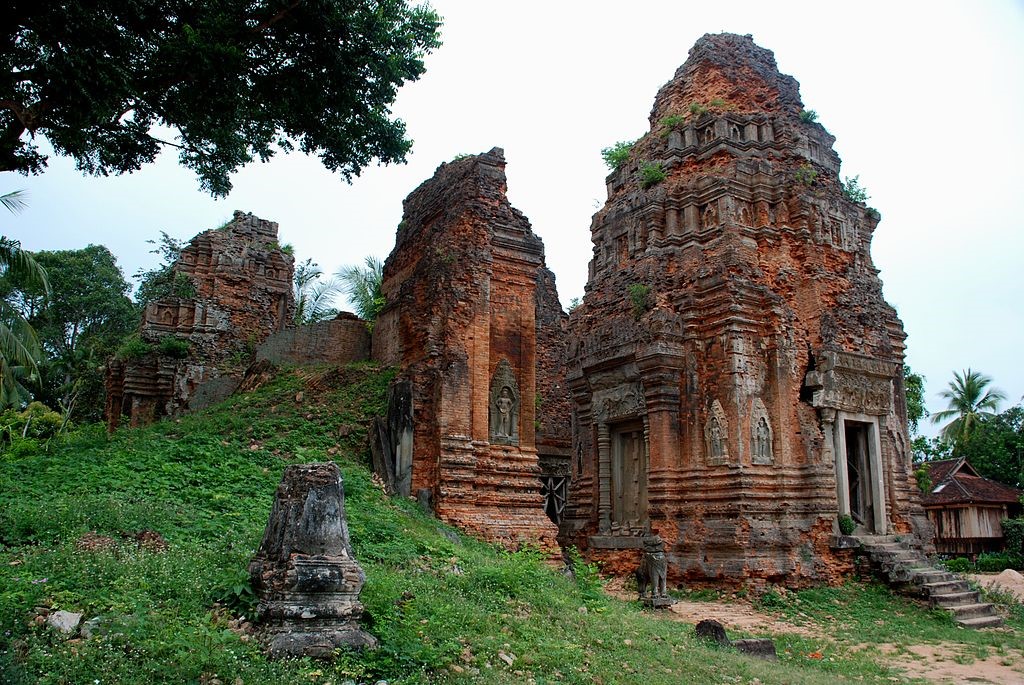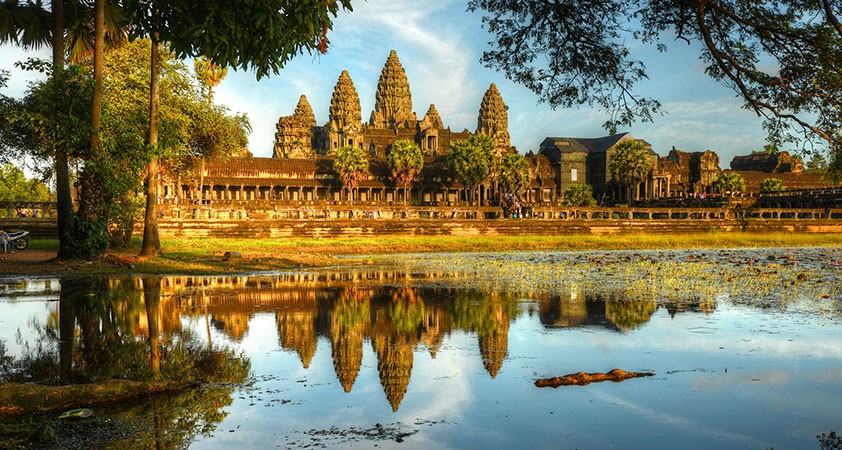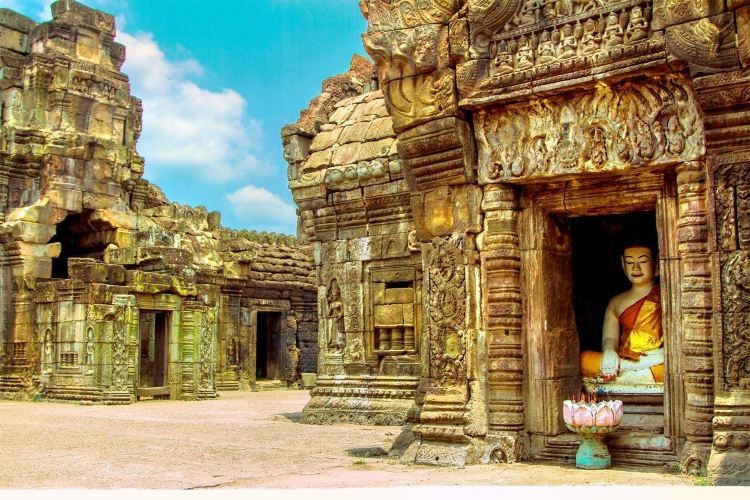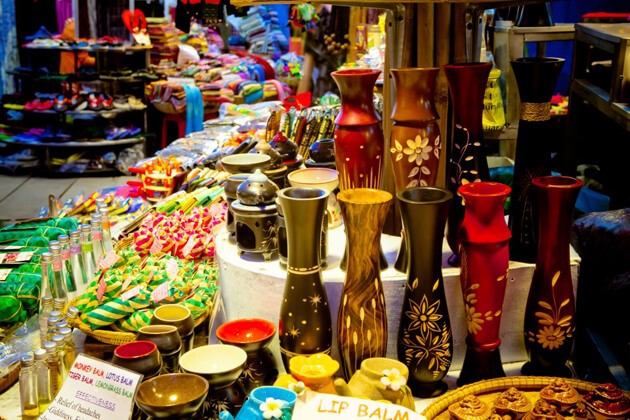OVERVIEW
This combined trip on land & on board of a boat will give you the opportunity to explore the country in another way. Lay back on your comfortable river cruise to enjoy the scenery!
ITINERARY
Cambodia River Cruise from Siem Reap to Phnom Penh
9 Days / 8 Nights
- Half day visit: Roluos Group
Arrive in the morning – meet with guide for transfer to hotel.
Siem Reap is the nearest town to the temple complex of Angkor. From the 9th to 13th century, Angkor was the heart of a rich and sophisticated civilization. You will see massive stone monuments, wide majestic causeways, imposing gateways and towers, all in a wonderful jungle setting.
PM visits: Roluos Group:

Three temples Bakong, Lolei and Preah Ko - 11 Kms southeast of the Siem Reap Market, comprise the Roluos group of monuments - close together and extend over an area of 3 kms east of the Great Lake. The Roluos group, dating from the late 9th century, is the earliest site of the 600 years Angkor Period that is open to visitors.
Overnight in Siem Reap
- South Gate of Angkor Thom and Angkor Wat
Breakfast at your hotel.
Angkor Thom is a wonder of the world to discover its beauty. The temple is quite beautiful and majestic. It still keeps almost the structure of the work that is well preserved. Angkor Thom is also known as the Temple of Trees because there are many types of trees in this area. Along the way you can enjoy the local people's music program with the traditional instruments of this country, which is a remarkable activity.

Proceed to morning visits with South Gate of Angkor Thom for including the famous Bayon Temple (featuring a sea of over 200 massive stone faces looking in all direction, built in the 12th century by King Jayavarman VII as part of a massive expansion of his capital Angkor Thom, built at the exact center of the royal city), Phimeanakas Temple within the Royal Palace enclosure, Baphuon Temple, the Terrace of the Elephants and the Terrace of the Leper King.
Lunch in a local restaurant.
The afternoon is dedicated to visit the most famous & magnificent Angkor Wat temple.

This architectural masterpiece was constructed in the 12th century and covers an area of about 210 hectares. With many galleries with columns, libraries, pavilions, courtyards and ponds full of water, carved low-reliefs about Ramayana Story and day-to-day life at the time of Angkor's construction.
At the end of the afternoon Angkor Wat discovery watches the sunset on the temples and the spectacular views over Angkor Wat from Phnom Bakheng Hill.
Overnight at hotel in Siem Reap.
- Banteay Srei, Banteay Samre and Grand Circuit
Breakfast at your hotel.
AM visit: Banteay Srei (Citadel of the women, completed in 967 AD and is built largely of red sandstone, a medium that lends itself to the elaborate decorative wall carvings which are still clearly visible today. Banteay Srei is the only major temple at Angkor not built for a king), then Banteay Samre (monument containing both Hindu and Buddhist depictions)
Lunch in a local restaurant.
PM visit: Grand Circuit including Pre Rup (Change the body), East Mebon, Ta Som, Neak Pean (built based on the balanced belief of ancient Hindus; four pools connect around the temple, representing elements of fire, water, land and wind - entering these pools will be healthy because it balances the elements), Preah Khan (built in the 12th century for King Jayavarman VII) and Baksei Chamkrong (a 10th century temple found near the Angkor Thom South gate with a very steep pyramidal temple topped with a single prasat tower built as a Hindu sanctuary dedicated to Shiva)
Overnight in Siem Reap.
- Cruise to Kompong Chnang
Breakfast at hotel, then check out.
Transfer to Les Artisans d’Angkor - Chantiers Ecole where visitors can observe students learning traditional carving and finishing techniques
Transfer to the pier to board a cruise boat. Lunch is served upon boarding the boat.
Check in your cabin.
The boat leaves the pier, your journey begins!
Ton Le Sap lake is the largest fresh water in South East Asia. Its dimension changes depending on the monsoon and dry season. During raining season from June to October, the lake is filled by water flowing from the Mekong with 14m in depth and expands the surface of 10,000 km2. In dry season from November to May its size 3,000 km2 with 2m in depth and water flows out from the Lake to the Mekong, in and out flowing is the natural phenomenon occurrences. The flooded forest surrounding the edge of the lake is the best shelter and also very important for all kinds of fishes spawned and breeding babies. This lake providing many of biodiversities, over 300 species of fresh water fishes, as well as snakes, crocodiles, tortoises, turtles and otters. More than 100 varieties water birds including storks, pelicans…
The Lake is also an important commercial resource, providing more than half of the fish consumed in Cambodia. In harmony with the specialized ecosystems, the human occupations at the edges of the lake is similarly distinctive - floating villages, towering stilted houses, huge fish traps, and an economy and way of life deeply intertwined with the lake, the fish, the wildlife and the cycles of rising and falling waters.Enjoy the spectacular sunset from the deck before dinner.
Overnight on board.
- Visits: Pottery village, Floating house
Breakfast on board.
For early people, enjoy the Tai Chi lesson on the deck as the sun rises slowly.
AM: the ship travels out of the lake towards Kampong Chnang province, through the marshes along the river.
PM: After lunch, bus transfer to a Khmer Style pottery village. Kampong Chhnang is renowned for its fine clay pottery. In fact, its name in Khmer means ‘Port of Pottery’. Kampong Chhnang is a tranquil province lined with sugar-palm trees and paddy fields which blend into the horizon in dazzling hues of gold and green.
Andong Russei is a small village in Kampong Chnang province where most villagers keep making pottery the traditional way. Some have been involved in the trade even before the Khmer Rouge regime.
Villagers have installed a traditional fountain made out of a vase at the workshop entrance and a long bamboo bed so that tourists can sit while watching them work the wheel. The villagers are always eager to share their skills and knowledge in pottery with curious visitors. Tourists can watch the villagers at work or they can learn the craft. They can make their clay pots and take them home, or they can buy souvenirs already made.

Back to the ship, then head to Kampong Cham along the wetlands, floating houses, and fish farms in the area before arrival Kampong Cham in the evening.
Dinner on board.
Overnight on board near Kampong Cham.
- Visits at Kampong Cham: Wat Hanchey & Wat Nokor .
Breakfast on board.
Located on the central lowlands of the Mekong River, Kampong Cham is a laid-back province in Cambodia. It borders the provinces of Kampong Chhnang to the west, Kampong Thom and Kratié to the north, Tbong Khmum to the east, and Prey Veng and Kandal to the south. Its capital city has the same name of Kampong Cham which means ‘Port of the Chams’ in Khmer.
Kampong Cham was an important trading post during the French period, the legacy of which is evident as you wander through the streets of chastened yet classic buildings. On December 31st, 2013, the former Kampong Cham was officially divided into two provinces marked a political move by the ruling party. Today, all land west of the Mekong remains Kampong Cham, while land east of the river becomes Tbong Khmum province.
Because of little foreign investment and no large-scale tourism, Kampong Cham is quite poor and less-developed with few modern buildings, though there is abundant of French architecture from the colonial period. However, with the completion of a modern Kizuna Bridge, the first bridge to be built over Mekong River in Cambodia which connects the country's northeastern regions to the city, the city has begun a slow recovery from decades of decline.
Kampong Cham is one of the most highly-populated provinces in Cambodia, where most residents consist of ethnic Khmer and a sizeable Cham minority in Cham community. Like the rest of Cambodia, the religion in Kampong Cham ranges from Islam, Muslim to Christian.
The real charm of Kampong Cham is said to be reflected evidently in normal life and local traditions. On weekends and special occasions, tourists can enjoy the Apsara dancing, a Cambodian traditional art performance. The dancing is usually performed behind Nokor Wat by children and teenagers from non-business organizations for free.
The ancient beauty here is represented through Nokor Wat, a modern Theravada Buddhist pagoda built in 11th century. To reach this place, follow the road to Phnom Penh and then take the left fork about 1km from the town. Going through a dirty road, you will see the ancient pagoda. Tourists can identify that Nokor Wat was built based on Ankorian architecture and made of sandstone and laterite. The highlights of inside area are ancient paintings describing torture of religious nature and charming scenes of heaven also.
- Wat Hanchey (Hanchey temple)

Wat Hanchey is a beautifully situated hilltop pagoda that overlooks the Mekong River. The hill sits next to a river bend with a huge island in the middle of the river. The view of the Mekong is outstanding from the top and must be one of the best in Cambodia. The brick structures of Wat Hanchey date back to the 8th century. It was an important religious center during the pre-Angkor Chenla Empire period. There are many religious monuments and small building that remain spread out over the large hilltop.
The temple complex sits on top of a hill with good views of the river - when the weather is fine.
The oldest part of Wat Hanchey dates from the 7th or 8th century, before the glory days of the Khmer empire when Angkor Wat and Angkor Thom were built in the 12th century. It’s a weather-worn red brick edifice but crowded all around are more recent temples, pagodas, stupas, houses and statues. The statues depict mythical heroes and creatures, wild and domestic animals, a huge variety of fruit …
Visitors can climb 291 steps /or/ take the bus drive to reach the top of the pagoda.
Wat Hanchey is populated by Buddhist monks and the many novices in their care.
- Wat Nokor
The original fusion temple, Wat Nokor is a modern Theravada Buddhist pagoda squeezed into the walls of a 12th-century Mahayana Buddhist shrine of sandstone and laterite.

The temple complex of Banteay Prey Nokor is especially known by the main temple of Wat Nokor (official name)
The Nokor Bachey Temple can be divided into four distinct buildings that have been named as long buildings.
The 1st long building of Nokor Bachey Temple of Kampong Cham is 421 meters and 371 meters in dimension made of laterite stones. The height is of 9 meters and length is of 2.4 meters. Most part of this building is destroyed over time. Inside this building you will find structures like Six Lions, Eight dragons and two devils. The 2nd long building is also a beautiful architectural structure that includes two statues of Te Cho Dam Din, two devils each of1.6-metre in height and two ponds, each having the size of 20 meter. The most significant one is the 3rd long building, where you will find eight-hand statue of Preah Norey located near the entrance. A four-hand statue of Preah Norey is located on the left hand side of the Nokor Bachey Temple, Kampong Cham. Finally comes the 4th long building, which is also made of laterite stone and can be accessed from 12 directions. In the middle of the building you will find a high peak made of sandstone with Buddhist statue.Overnight in the midstream near Phnom Penh.
- Phnom Penh City tour
Breakfast on board.
Proceed to visit Phnom Penh capital city:
- Wat Phnom Pagoda translated as "hill temple" - is the tallest and most important temple in the Cambodian capital of Phnom Penh. The temple, first constructed in 1373, was erected on a man - made, 27-metre-tall mound overlooking the city. It is the tallest religious structure in the city. Legend relates that Daun Penh, a wealthy widow, found a large koki tree in the river. Inside the tree she found four bronze statues of the Buddha. Lady Penh constructed a small shrine on an artificial hill made by the people living in the village to protect the sacred statues. Eventually this became a sacred site and sanctuary where people would make blessings and pray.
- Royal Palace:The Royal Palace of Cambodia is a complex of buildings being built over one century ago to be the royal abode to the King of Cambodia, the royal family and the foreign guests. It is also the place where take place the king’s audience, coronations and official ceremonies. The buildings with beautiful towering spires are a great example of classic Khmer architecture found in Cambodia today.
Along with numerous other interesting buildings within the 183,135 square meters (421m x 435m) compound is the Khemarin Palace, also known as Prasat Khemarin or the "Palace of the Khmer King." This is officially the residence of His Majesty, King Norodom Sihamoni.
The visit to the Royal Palace includes the Throne Hall, the Temple of the Emerald Buddha, Stupas, a Royal Dining Hall, the Chan Chhaya Pavilion and a French-style building that was a gift from Napoleon III French King.
- Silver Pagoda, also called Emerald Pagoda: is located inside the Royal Palace complex. It is called Silver Pagoda as there are 5,329 tiles of silver inlaid on the floor, each tile of silver is handmade and weighs 1,125 grams. The pagoda has a cultural function and keeps precious religious objects more than a place of worship. There are over 1650 valuable objects in the pagoda. The statue of Buddha sit atop throne in the main temple is in emerald.

- National Museum, located at the North of the Royal Palace, is the largest museum of cultural history and is the country's leading historical and archaeological museum.
The museum houses one of the world's largest collections of Khmer art, including sculptural, ceramics, bronzes, and ethnographic objects. The Museum’s collection includes over 14,000 items, from prehistoric times to periods before, during, and after the Khmer Empire, which at its height stretched from Thailand across present-day Cambodia, to southern Vietnam. The Museum buildings, inspired by Khmer temple architecture, were constructed between 1917 and 1924, the museum was officially inaugurated in 1920, and it was renovated in 1968.
- Toul Sleng Genocide Museum which was a former secondary school, was used as the S-21 interrogation and detention center of the Khmer Rouge regime from its rise to power in 1975 to its fall in 1979. Located in the heart of Phnom Penh, it preserves a tragic period in history with the aim to encourage visitors to be messengers of peace.
- Cheung Ek Killing field is the site of a former orchard and mass grave of victims of the Khmer Rouge - killed between 1975 and 1979 – at about 17 kilometres south of the Phnom Penh city centre. It is the best-known of the sites known as Killing Fields, where the Khmer Rouge regime executed over one million people between 1975 and 1979.
Back to the ship to enjoy a farewell dinner with a variety of cocktails and a traditional Apsara dance show aboard.
Overnight on board.
- Free day for relax at leisure and shopping
Breakfast on board.
The cruise ends after breakfast.
Transfer to hotel for check in.
Free time for exploring the capital city of Cambodia.

Best places for purchasing souvenir at some of Phnom Penh’s famous shopping malls like Sorya Trade Center, Naga City Walk, The Russian Market.
Overnight in Phnom Penh.
- Departure day
Free time until transfer to Pochentong Int’l Airport of Phnom Penh for departure flight.
